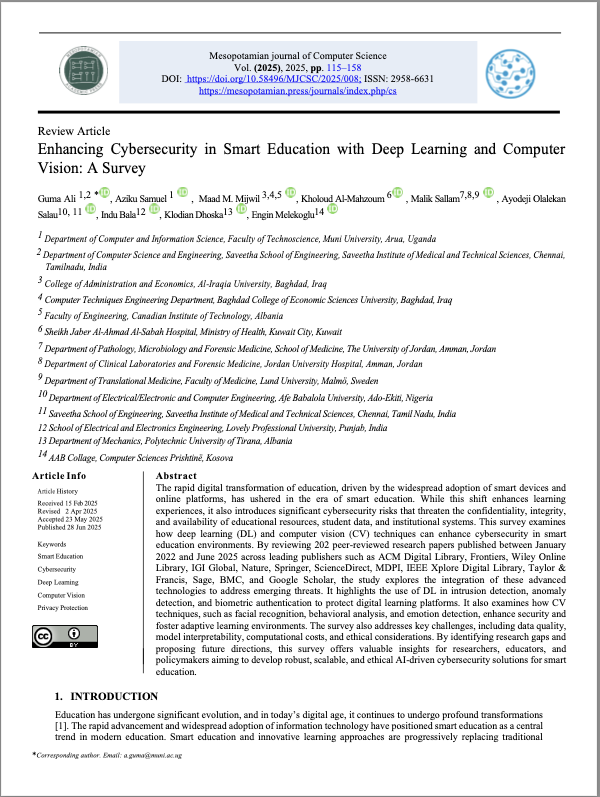Enhancing Cybersecurity in Smart Education with Deep Learning and Computer Vision: A Survey
Main Article Content
Abstract
The rapid digital transformation of education, driven by the widespread adoption of smart devices and online platforms, has ushered in the era of smart education. While this shift enhances learning experiences, it also introduces significant cybersecurity risks that threaten the confidentiality, integrity, and availability of educational resources, student data, and institutional systems. This survey examines how deep learning (DL) and computer vision (CV) techniques can enhance cybersecurity in smart education environments. By reviewing 202 peer-reviewed research papers published between January 2022 and June 2025 across leading publishers such as ACM Digital Library, Frontiers, Wiley Online Library, IGI Global, Nature, Springer, ScienceDirect, MDPI, IEEE Xplore Digital Library, Taylor & Francis, Sage, BMC, and Google Scholar, the study explores the integration of these advanced technologies to address emerging threats. It highlights the use of DL in intrusion detection, anomaly detection, and biometric authentication to protect digital learning platforms. It also examines how CV techniques, such as facial recognition, behavioral analysis, and emotion detection, enhance security and foster adaptive learning environments. The survey also addresses key challenges, including data quality, model interpretability, computational costs, and ethical considerations. By identifying research gaps and proposing future directions, this survey offers valuable insights for researchers, educators, and policymakers aiming to develop robust, scalable, and ethical AI-driven cybersecurity solutions for smart education.
Article Details
Issue
Section

This work is licensed under a Creative Commons Attribution 4.0 International License.
